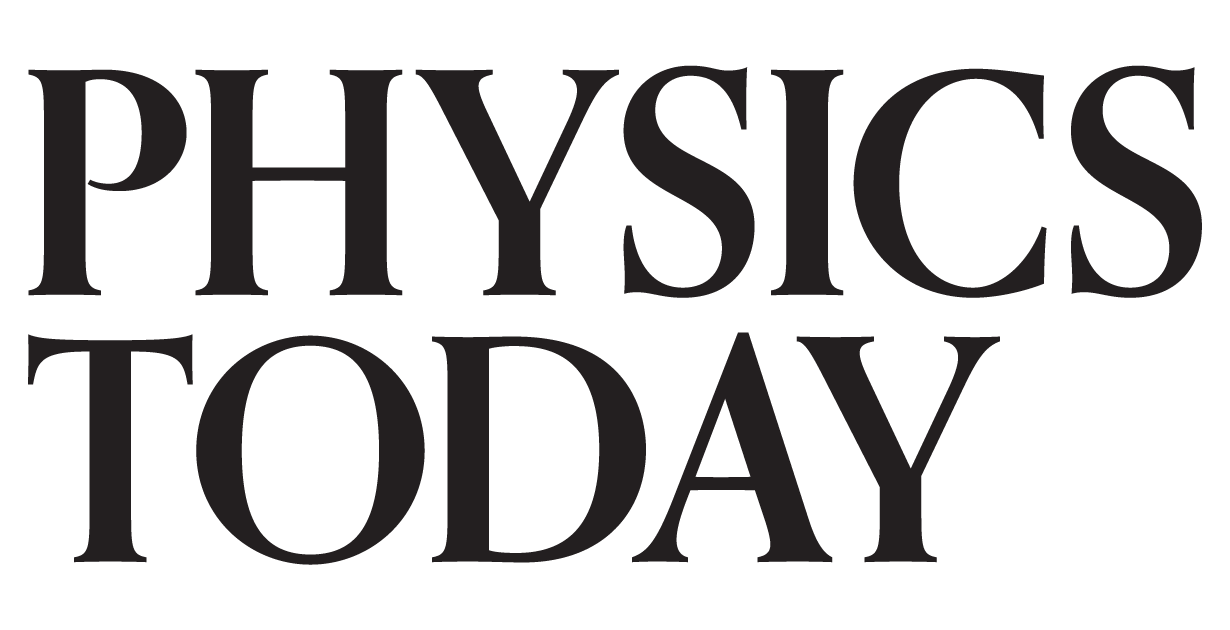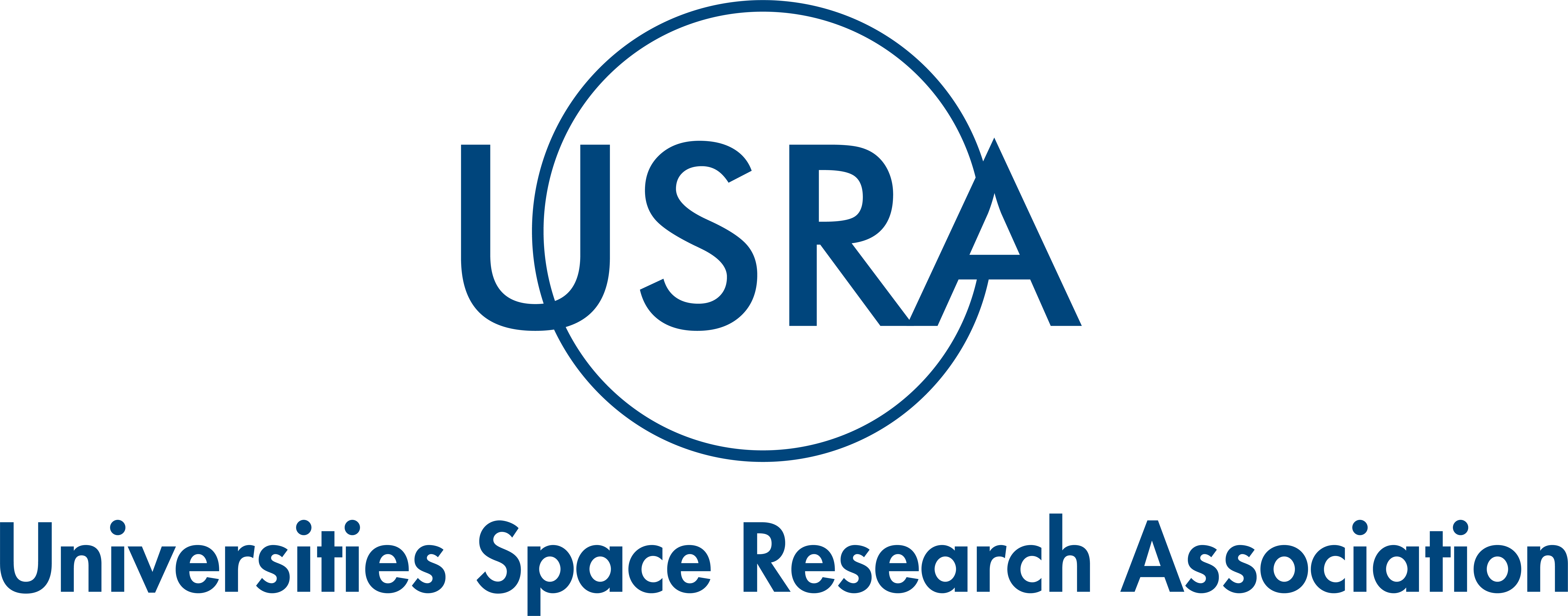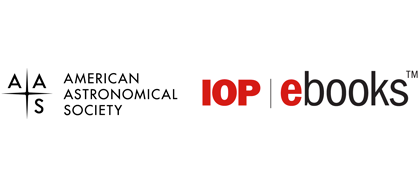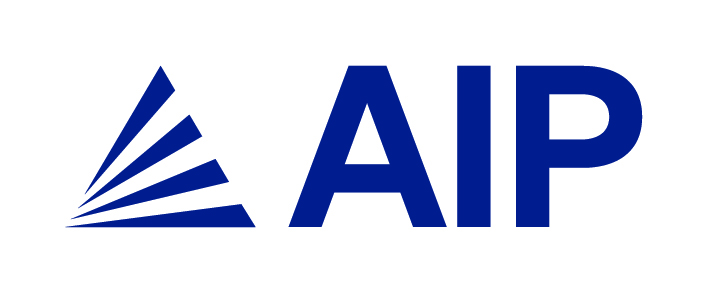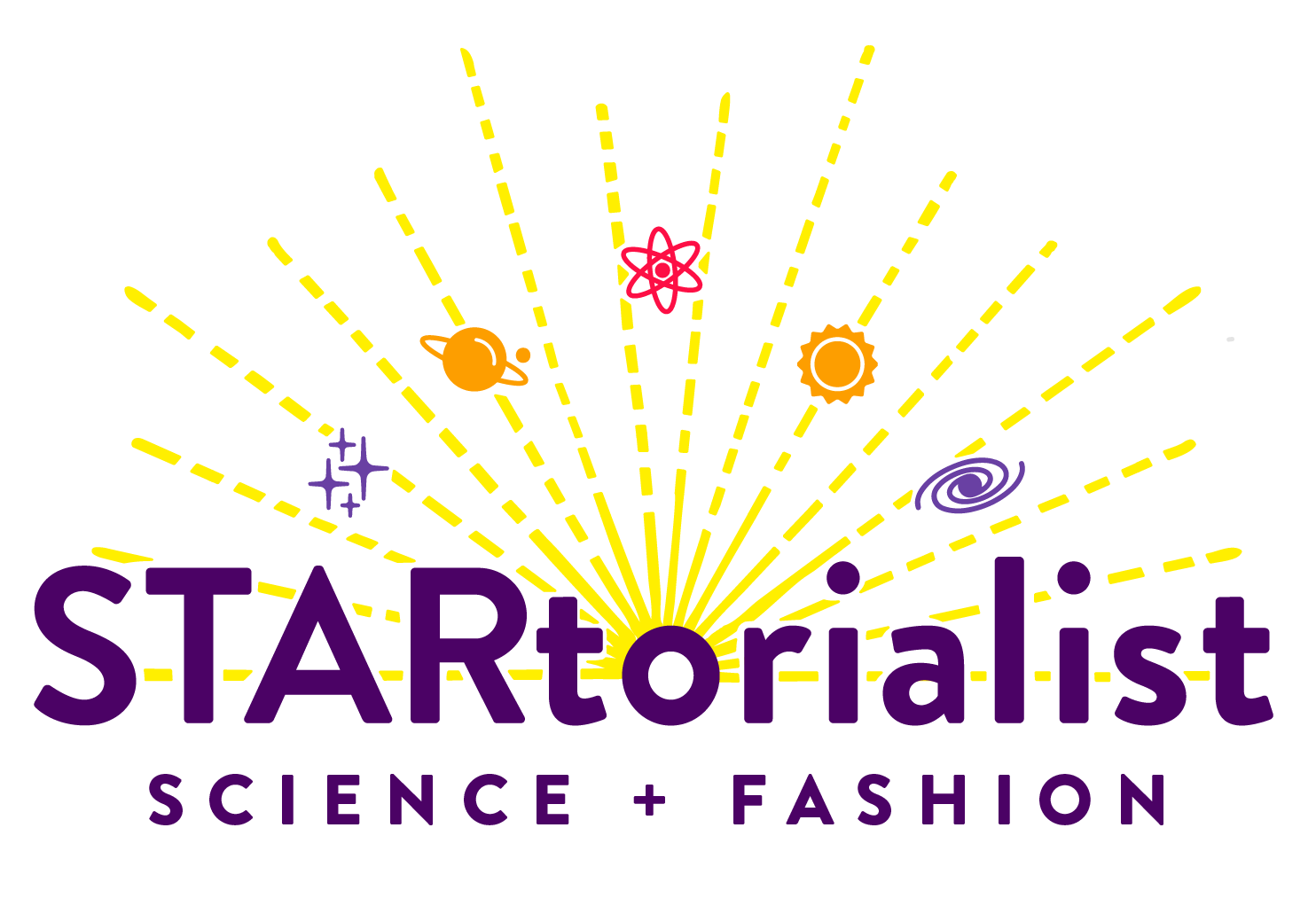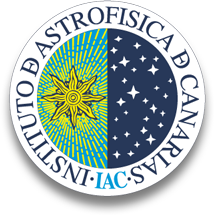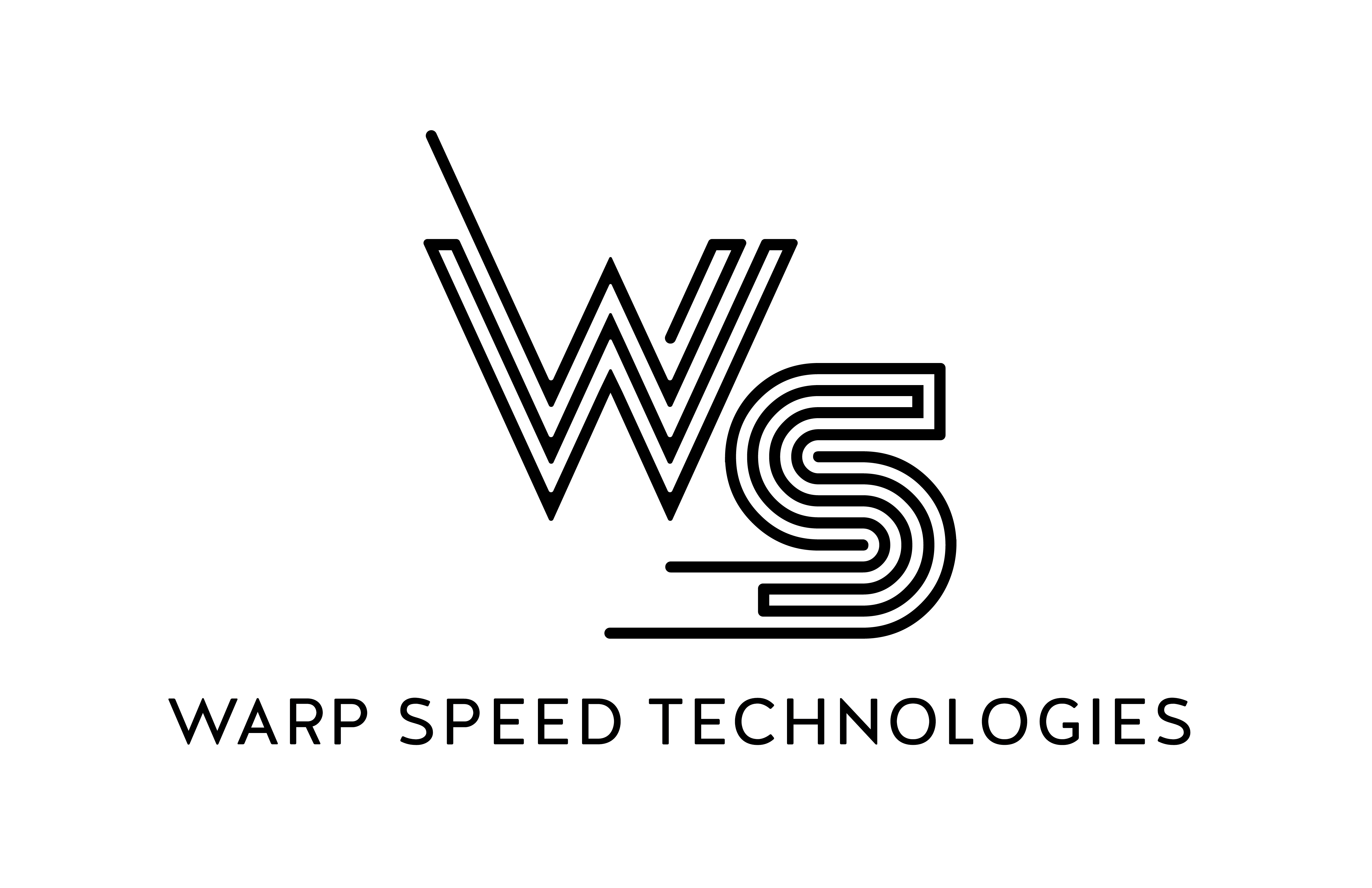237th meeting
237th AAS Meeting Exhibitors


[Monday] [Tuesday] [Wednesday] [Thursday] [Friday]
**All times specified in Eastern Timezone
Monday, 11 January 2021
Exoplanet Science with the Nancy Grace Roman Space Telescope
Aki Roberge (NASA)
Monday, 11 January - 12:00pm-12:30pm ET
Join NASA Deputy Program Scientist for the Nancy Grace Roman Space Telescope, Aki Roberge, to learn how Roman will conduct the definitive survey of cold exoplanet demographics and provide the first space demonstration of active coronagraphy to study exoplanets.
Join Discussion on Slack Channel
Hubble Advanced Products
Clara Brasseur (STScI), David Rodriguez (STScI)
Monday, 11 January - 12:00pm-12:30pm ET
The Hubble Advanced Products are a new generation of high level products generated from HST data with the most recent calibration and reference files. We will show how to use the MAST Portal and Astroquery to discover and access these products alongside their original HST data.
Join Discussion on Slack Channel
Tools and Tutorials for the analysis of time series data from Kepler/K2 and TESS missions
Rebekah Hounsell (UMBC/NASA GSFC)
Monday, 11 January - 12:30pm-1:00pm ET
In this workshop we will teach the user how to access, analyze, and manipulate data from NASA’s exoplanet missions, Kepler/K2 and TESS. All tools presented will teach the user how to work with time series data for the purpose of scientific research. A set of Jupyter notebooks have been created via a collaboration between NumFocus, MAST, Lightkurve, and TESS GI office. They make use of python astronomical data packages to demonstrate how to analyze time series data from these NASA missions. The workshop assumes a basic knowledge of python and astronomy and will walk the user through several of the concepts outlined below, · How to obtain Kepler/K2 and TESS data products from the MAST archive · How to use LightKurve to access the various data products and create time series · How to analyze and assess various data anomalies and how you might visualize them · How to account for instrumental and noise effects within your data
Join Discussion on Slack Channel
ALMA Opportunities & Status
Phil Jewell (NRAO), TBD (NRAO)
Monday, 11 January - 12:30pm-1:00pm ET
This NRAO webinar will inform the AAS membership and user community of the current status of: (a) the ALMA Observatory and science restart operations in Chile; (b) the Cycle 8 Call for Proposals and opportunities; (c) the next ALMA Development Call for Proposals opportunity; and (d) other matters of particular interest to the ALMA users community.
Join Discussion on Slack Channel
The James Webb Space Telescope Science
Jonathan Gardner (NASA)
Monday, 11 January - 1:00pm-1:30pm ET
Webb has less than a year to launch. Join Jonathan Gardner, NASA's Deputy Senior Project Scientist for the James Webb Space Telescope, for an overview of Webb science goals.
Join Discussion on Slack Channel
The Keck Observatory Archive
G. Bruce Berriman (Caltech/IPAC-NExScI)
Monday, 11 January - 1:00pm-1:30pm ET
New and upcoming services for KOA users.
Join Discussion on Slack Channel
Chandra Source Catalog: Multiband Counterparts and SDSS-V Spectroscopic Followup
Paul J. Green (CXC), Francesca Civano (CXC)
Monday, 11 January - 1:30pm-2:00pm ET
The Chandra Source Catalog v2.0 (CSC) characterizes more than 300,000 unique X-ray sources detected in Chandra observations covering ~600deg2 of the sky. Making use of a Bayesian matching algorithm, we are finding the most likely counterparts in other wavebands (SDSS, PanSTARRs, 2MASS, Gaia). More than 100,000 optical and IR counterparts thus identified are being submitted as potential targets for spectroscopy during the latest incarnation of the Sloan Digital Sky Survey, SDSS-V between 2020 and 2025. We estimate that medium resolution optical fiber spectroscopy (R~2000) will be obtained for more than a third of submitted targets, where SDSS pointings and larger science programs allow. Such spectra will characterize tens of thousands of X-ray emitting quasars, stars and galaxies. About 3% of matched CSC sources, mostly in the Galactic plane, have no optical counterpart, yet are quite bright in the infrared, so may receive high resolution (R~22,000) IR spectroscopy. We expect this to unveil thousands of highly obscured X-ray binaries in the Milky Way. The SDSS calibrated digital spectra will be served to the public by the CXC, along with SDSS pipeline characterizations.
Join Discussion on Slack Channel
NExScI's NASA Exoplanet Archive and ExoFOP
Calen B. Henderson (Caltechh/IPAC-NExScI)
Monday, 11 January - 1:30pm-2:00pm ET
Come learn about NASA's Exoplanet Archive and ExoFOP services --- serving the most comprehensive data on exoplanetary systems and supporting the community follow-up observations of TESS candidates.
Join Discussion on Slack Channel
The Inevitable Ascension of sCMOS Detectors
Colin Haig (Diffraction Ltd)
Monday, 11 January - 2:00pm-2:30pm ET
Addressing the evolving landscape of detector technology and its impact on the observing community It’s undeniable: the rise of CMOS Active Pixel Sensor technology in consumer electronics and industrial machine vision has led to the demise of affordable sub-wafer CCD detectors. This in turn has greatly affected campus and mid-sized observatories through the introduction of new sCMOS cameras: gone are the affordable CCD detectors widely used in environments commonly using metre-class telescopes. In this special presentation, Diffraction Limited's leading experts in astronomy and scientific imaging solutions will provide the needed insights for observatory users, operators and investigators who wish to harness the power of new devices, while understanding their current limitations. Topics to be discussed include: • How the greater specialization and scarcity of CCDs will continue at the leading edge • How the new generation of CMOS devices will ultimately fill a widening void in the market • How the device structure of Active Pixel Sensors and on-chip analog-to-digital conversion bit depth can be used to gain control and impact dynamic range, noise, and image calibration workflow
Join Discussion on Slack Channel
The Legacy of the Spitzer Space Telescope and You
Sean Carey (Caltech/IPAC)
Monday, 11 January - 2:00pm-2:30pm ET
The Spitzer Space Telescope ceased collecting science data in January 2020 after 16+ years of operations. We’ll show you to access the entire mission archive and resources that will help you use this rich dataset for your science.
Join Discussion on Slack Channel
New Content and Capabilities in the NASA/IPAC Extragalactic Database
Joseph Mazzarella (Caltech/IPAC-NED)
Monday, 11 January - 2:30pm-3:00pm ET
NED is a comprehensive database of multiwavelength data for extragalactic objects, providing a systematic, ongoing fusion of information integrated from hundreds of large sky surveys and tens of thousands of research publications. We will highlight recent updates to content and user interface capabilities.
Join Discussion on Slack Channel
High Level Science Products
Scott Fleming (STScI)
Monday, 11 January - 2:30pm-3:00pm ET
High Level Science Products (HLSPs) are community-contributed data products that complement or supplement MAST missions. We will explain why you may want to provide HLSPs to MAST, and highlight the new HLSPs from the past year.
Join Discussion on Slack Channel
Gemini Program Platform Overview: The Next Generation Gemini Operations Software
Bryan Miller (Gemini Obs. / NSF's NOIRLab), Andrew Stephens (Gemini Obs. / NSF's NOIRLab)
Monday, 11 January - 4:00pm-4:30pm ET
The Gemini Program Platform (GPP) is a major software development initiative to rewrite and reimagine the operations software of the International Gemini Observatory. This will replace the current Phase I Tool (PIT) and Observing Tool (OT) with a web application designed to make proposal submission and observation preparation easier. It will also improve the underlying software infrastructure in order to facilitate the development of new features and to support Gemini, and potentially NOIRLab, operations for the next few decades. This webinar will give an overview and status update of the project, demo an early test version, and allow time for questions and feedback.
Join Discussion on Slack Channel
Behind the Scenes at S&T
Peter Tyson (Sky & Telescope Magazine)
Monday, 11 January - 4:00pm-4:30pm ET
Take a virtual trip into the Sky & Telescope editorial offices to learn about the magazine's nearly 80-year history, meet current staff, and expand your understanding of the S&T brand, including its website, products, and tours.
Join Discussion on Slack Channel
The Network for Earth-space Research Education and Innovation with Data (NEREID).
Tim Spuck (AUI), Catherine Cramer (AUI), Stephen Uzzo (AUI)
Monday, 11 January - 4:30pm-5:00pm ET
The purpose of the Network for Earth-space Research Education and Innovation with Data (NEREID) is to catalyze a network of practitioners across academia, industry and research to identify, leverage, amplify, and scale efforts to conduct research, develop tools, and engage communities of learners and policymakers in Earth and space science. NEREID recognizes the importance of interdisciplinarity, equity, and the dynamic relationship among data, modeling, and individual perspective. NEREID will facilitate development and dissemination of accessible and democratized tools and methods and work with systems of education and learning to integrate these tools into education and policy. NEREID will accomplish this through development of a community of practice: a network of practitioners who are aligned in their goals and work mutualistically toward a common purpose.
Join Discussion on Slack Channel
University of Mars Video Game: Virtual Learning for Astro 101
Jane Charleton (Penn State & AstroVenture), Andrew Mshar (AstroVenture), Nahks Tr'Ehnl (Penn State & AstroVenture)
Monday, 11 January - 4:30pm-5:00pm ET
Over 25,000 students have taken Astro 101 through our self-contained video game adventure, deliberately designed for virtual learning at the college level. Try it for yourself at this interactive webinar where we will help you download and play a demo version of our University of Mars game. This game covers all the usual topics for general education Astro 101 classes, and can be used alone in a purely virtual course or combined with your own materials in a blended learning environment. Embedded mini-games teach concepts, from moon phases to early universe particle physics, and frequent questions help students to assess their learning as they progress. As well as providing an opportunity for participants to try it themselves, this webinar presentation will provide an overview of the game, discuss learning goals and student feedback, and allow you to ask questions about how you might use it in your own virtual classroom. It has been used for classes as small as 10 students and as large as 5000 students. For more information on the Astro 101 Video game please see our website http://theastroventure.com
Join Discussion on Slack Channel
One Step Closer to Imaging Earth 2.0: Latest Advances in Starshades and Coronagraphs
Brendan Crill (NASA Exoplanet Exploration Program, JPL, Caltech)
Monday, 11 January - 5:00pm-5:30pm ET
Scientists and engineers around the world have made significant advances in starlight suppression technology that could enable a future NASA mission to directly image and spectrally characterize the atmosphere of Earth-sized exoplanets in the habitable zones of Sun-like stars. Join us at this webinar to hear the latest news on technology developments from NASA’s Exoplanet Exploration Program.
Join Discussion on Slack Channel
Exominer: A Very accurate Deep Learning Classifier to Mine Exoplanets
Hamed Valizadegan (USRA)
Monday, 11 January - 5:00pm-5:30pm ET
The Kepler and TESS (Transiting Exoplanet Survey Satellite) missions have revolutionized the study of exo-planets in astronomy by comprehensively analyzing stars outside the solar system in search for transiting planets. These telescopes work based on transit photometry and their pipelines return a list of threshold crossing events (TCEs) whose light signature resemble a planet. However, not all TCEs are planet orbiting a star and they could be due instrument noise or other astrophysical phenomena. We will talk about our advanced deep learning model, ExoMiner, that is able to very accurately classify TCEs, much better than existing methods.
Join Discussion on Slack Channel
Tuesday, 12 January 2021
Galaxies-MDPI: Particles and Fields in Black Hole Environment; The cultivation of X-ray binaries (XRBs): how local environments influence XRB formation and evolution
Bobomurat Ahmedov (Ulugh Beg Astronomical Inst., Tashkent), Antara Basu-Zych (University of Maryland, Baltimore County, UMBC)
Tuesday, 12 January - 10:00am-10:30am ET
Presentation 1:
There has been a rapidly growing interest in the study of relativistic astrophysics of gravitational compact objects due to several recent achievements: The recent direct detection of gravitational waves from the numerous events of merging gravitational compact objects in a close black hole and neutron star binaries by LIGO-VIRGO scientific collaboration, the measurement of general relativistic effects in strong gravity regime in the environment of the supermassive black hole Sagittarius A* at the Milky Way center by the ESOs GRAVITY instrument, and the first image of a black hole shadow in the center of elliptic galaxy M87 by the Event Horizon Telescope. In light of these recent successes of the general theory of relativity, the scope of this Special Issue is to open discussion of these topics to researchers working in areas such as Mathematical and Theoretical Physics, General Relativity, and Relativistic and Observational Astrophysics.
Presentation 2:
Over the past decade, the X-ray binary (XRB) research community has dedicated significant research to addressing: How do XRBs form and evolve in different galaxy host environments?
As the predecessors of gravitational wave sources and millisecond pulsars and as sources potentially relevant in the early Universe for heating the intergalactic medium, XRBs have become more relevant to the broader scientific community. Studies of XRB emission within nearby and distant galaxies have seen marked refinement over these years by adding more nuanced research of the relationships between XRBs and their host galaxy properties. Both theoretical and observational studies of the detailed physics, including accretion mechanisms, within XRB systems offered important constraints for models.
Join Discussion on Slack Channel
Behind the scenes of NASA’s Exoplanet Travel Bureau posters
Tiffany Kataria (NASA's JPL, Caltech), Thalia Khan (NASA's Exoplanet Exploration Program)
Tuesday, 12 January - 12:00pm-12:30pm ET
Go behind the scenes with NASA’s Exoplanet Exploration Program Office and learn the science behind the Exoplanet Travel Bureau Posters! Learn about the process of selecting and designing worlds beyond our solar system and see how we illustrate planets we cannot see based off of observations and our knowledge of physics.
Join Discussion on Slack Channel
Exploring the Mid-IR Galactic Center with SOFIA Legacy Maps
Jamse Radomski (SOFIA/USRA), Nicole Karnath (SOFIA/USRA)
Tuesday, 12 January - 12:30pm-1:00pm ET
The Galactic Center legacy maps obtained with FORCAST at 25- and 37-µm provide a large-scale view of bright infrared emission in the region, with an unprecedented spatial resolution. The detected emission allows one to constrain the dust spatial distribution and temperature, and to identify compact sources, including candidate young stellar objects, hence providing unique contextual information for the study of the closest galactic nucleus. We will present this publicly available dataset and different techniques to derive information and exploit its scientific value.
Join Discussion on Slack Channel
Astronomers Turned Data Scientists
Jeff Silverman
Tuesday, 12 January - 1:00-7:30pm ET
This is the third annual Astronomers Turned Data Scientists (ATDS) Splinter Meeting. This Splinter Meeting came from a desire to create a more cohesive community among former astronomers who are currently working with big data in industry and between ATDS and current astronomers (especially those who use data science tools and techniques in their research, as well as those who might be interested in transitioning from academia into a data-related career).
The Splinter Meeting will consist of a series of talks and panels that cover a wide range of topics aimed at ATDS who are currently working as data scientists (or in data-adjacent roles) in industry. The schedule (which can be found below) will include mostly technical talks by data scientists, but we also plan to include some career-related presentations from ATDS as well (aspects of which might be more applicable to current data scientists and aspects of which might be more applicable to prospective data scientists).
In addition, networking and recruiting among the current data scientists and prospective data scientists will be strongly encouraged. To this end we will have ample time for networking during our Splinter Meeting and many of our attendees and presenters will participate in various AAS Career Services events throughout the AAS Meeting. More info about recruiting and other data-related and career-related events at the AAS Meeting can be found below.
We also plan to have an official (virtual) evening event for ATDS attendees after the main ATDS meeting on the evening of January 12.
If you have any questions, please don't hesitate to contact us at Astro2Data{at}gmail{dot}com and we look forward to seeing you in January!
Big Astronomy and ACEAP Programs
Renae Kerrigan (Peoria Riverfront Museum), Vivian White (Astronomical Society of the Pacific), Shannon Schmoll (Michigan State Univ.), Tim Spuck (AUI)
Tuesday, 12 January - 1:00pm-1:30pm ET
Associated Universities recognizes the importance of cultivating excellence, delivering value, enhancing education, and engaging the public. The AUI Office of Education and Public Engagement (OEPE) builds on decades of experience across formal and informal education and outreach, and the management of large complex science projects and facilities. Through the OEPE AUI works to identify and develop initiatives that are innovative and potentially transformative in STEM related education and outreach. Astronomy in Chile Educator Ambassadors Program The Astronomy in Chile Educator Ambassadors Program (ACEAP) is a collaboration between AUI, the National Radio Astronomy Observatory, AURA, National Optical Astronomy Observatory, and Gemini Observatory, and is supported by the National Science Foundation (NSF 1439408 and 1723697). The Program brings amateur astronomers, planetarium personnel, and K-16 formal and informal astronomy educators to US astronomy facilities in Chile. While at these facilities, ACEAP Ambassadors will receive extensive training about the instruments, the science, data products, and communicating science, technology, engineering, and mathematics (STEM) concepts. When they return home, the Ambassadors will share their experiences and observatory resources with schools and community groups across the US. ACEAP Website: https://astroambassadors.com/ Big Astronomy. It takes many people with diverse backgrounds, talents, and skills to run a world-class observatory. Meet a few of these people as they share the wonder of the sky—and the excitement of discovery. Explore the world-class observatories nestled in northern Chile’s mountains and learn why Chile, with its beautiful mountain ranges and clear, cloudless skies create an ideal environment for studying the cosmos. Continue discovering! Participate in live conversations with observatory staff, explore exclusive behind-the-scenes footage, educational activities, and ongoing science experiments all at bigastronomy.org Big Astronomy Website: https://www.bigastronomy.org/
Join Discussion on Slack Channel
Precision Optics for Next-Generation Missions: Reducing Manufacturing Costs and Schedule
Becky Borrelli (L3Harris)
Tuesday, 12 January - 1:30pm-2:00pm ET
L3Harris Technologies will present three of our advanced optical technologies created to significantly reduce cost and schedule associated with manufacturing of precision optical systems. Replicated Composite Optics represent a first of its kind approach to creating high stiffness, low mass, low CTE mirrors that are manufactured using a highly scalable approach. L3Harris has also developed two processes that significantly streamline the fabrication of glass components, low temperature fusion and capture range replication, that have recently been used to produce 9 off-axis aspheric segments. Finally, we will present our approach to additive manufacturing of our proprietary invar for space structures. This approach facilitates invar geometries not achievable with conventional machining while maintaining the superior performance of the L3Harris proprietary invar.
Join Discussion on Slack Channel
The NEID Doppler Spectrometer: a Status Report
Paul Robertson (The Univ. of California, Irvine, NEID)
Tuesday, 12 January - 2:00pm-2:30pm ET
Learn about recent results from the commissioning of the NEID Doppler spectrometer, including the instrument, port adapter, and queue scheduling system. NEID is an ultra-stable, high-resolution broadband optical spectrometer now installed at the 3.5m WIYN Telescope at Kitt Peak National Observatory. It will be available for Guest Observer proposals to the entire community, and will have an automated pipeline to provide precise radial velocities to all users.
Join Discussion on Slack Channel
SOFIA: Science from the Stratosphere
James De Buizer (USRA/SOFIA)
Tuesday, 12 January - 2:30pm-3:00pm ET
Join USRA's James De Buizer, Senior Scientist on the SOFIA Airborne Infrared Observatory, to learn how SOFIA’s mid- and far-infrared observations are uncovering new clues about the birth of stars and planets, our interstellar origins and the path to life, magnetic fields and the distant universe.
Join Discussion on Slack Channel
Dual-Anonymous Peer Review at NASA
Dan Evans (NASA)
Tuesday, 12 January - 4:00pm-4:30pm ET
Dual-anonymous peer review is revolutionizing the evaluation of proposals in the space sciences. Join Dan Evans, Program Scientist in NASA's Astrophysics Division, for an overview of how NASA is implementing dual-anonymous peer review and practical advice on how to prepare proposals.
Join Discussion on Slack Channel
Get your Personalized Notifications and Recommendations from ADS
Alberto Accomazzi (Center for Astrophysics | Harvard & Smithsonian), Kelly Lockhart (Center for Astrophysics | Harvard & Smithsonian)
Tuesday, 12 January - 4:30pm-5:00pm ET
After reviewing recent improvements of the NASA Astrophysics Data System (ADS), we will describe and demonstrate two new features: personalized recommendations based on a user's readership history and recommendations based on a user's profile. Join us to learn how to use the ADS to stay on top of new developments in your research area.
Join Discussion on Slack Channel
Jupyter Data Analysis Tools for Visualization
Brian Cherinka (STScI), Erik Tollerud (STScI)
Tuesday, 12 January - 5:00pm-5:30pm ET
Join Discussion on Slack Channel
Wednesday, 13 January 2021
How to Use Infrared Science Archive (IRSA) Tools
Luisa Rebull (Caltech-IPAC/IRSAA)
Wednesday, 13 January - 12:00pm-12:30pm ET
IRSA has the data and tools to help you make your next scientific discovery! Come and learn how to use IRSA's tools and to see all our latest tools and features.
Join Discussion on Slack Channel
Introduction to the Universe of Astro-Fashion
Emily Rice (STARtorialist)
Wednesday, 13 January - 12:00pm-12:30pm ET
You’ve seen our pop-up shop at previous AAS, DPS, and AGU meetings, and now you can purchase your favorite science fashion and gifts in our new online shop! Come learn about all the great things we have in store for STARtorialist.com including our newest custom & exclusive products, blog, outreach, and more.
Join Discussion on Slack Channel
First Black Holes
Ryan Hickox (NASA/Dartmouth College)
Wednesday, 13 January - 12:30pm-1:00pm ET
The origin of supermassive black holes is one of the greatest mysteries in astronomy. Current and upcoming NASA space telescopes can probe the distant, early Universe, to uncover the formation of these monsters that lurk in the heart of every massive galaxy today. Join Ryan Hickox, Professor of Physics and Astronomy at Dartmouth College, to hear about the latest discoveries in this exciting area of research.
Join Discussion on Slack Channel
Overview of USRA
Ghassem Asrar (USRA)
Wednesday, 13 January - 12:30pm-1:00pm ET
Universities Space Research Association is an independent, nonprofit research corporation where the combined efforts of in-house talent and university-based expertise merge to advance space science and technology. USRA works across disciplines including biomedicine, planetary science, astrophysics, and engineering and integrates those competencies into applications ranging from fundamental research to facility management and operations.
Join Discussion on Slack Channel
SOFIA Archive Opportunities: Science-Ready Data and Funding
Ed Chambers (SOFIA/USRA), Luisa Rebull (IPAC), B-G Andersson (SOFIA/USRA)
Wednesday, 13 January - 1:00pm-1:30pm ET
The SOFIA Archival Research Program (SARP) is now open for proposals to fund research projects primarily using SOFIA data. The purpose of this program is to encourage the use of available SOFIA archival data and to realize the full potential of the SOFIA archive. In this webinar we will present the search and visualization functionalities for SOFIA data in the IRSA archive, highlight and describe select high-potential public datasets, and discuss the mechanics of the open funding call.
Join Discussion on Slack Channel
Analyzing and visualizing volumetric data with yt
John ZuHone (SAO)
Wednesday, 13 January - 1:00pm-1:30pm ET
Yt is an open-source Python package for analyzing and visualizing volumetric data. Yt supports structured, variable-resolution meshes, unstructured meshes, and discrete or sampled data such as particles. The yt project aims to produce an integrated science environment for collaboratively asking and answering astrophysical questions. This webinar will feature a 15 minute introduction to yt, followed by a 15 minute Q&A.
Join Discussion on Slack Channel
Hubble ULLYSES Program
Travis Fischer (Space Telescope Science Inst.)
Wednesday, 13 January - 1:30pm-2:00pm ET
Join Travis Fischer of the Space Telescope Science Institute for an overview of the Hubble Space Telescope's Ultraviolet Legacy Library of Young Stars as Essential Standards (ULLYSES) Program. ULLYSES is a Director's Discretionary program of approximately 1,000 orbits that will produce an ultraviolet spectroscopic library of young high- and low-mass stars in the local universe.
Join Discussion on Slack Channel
From Wide Field Imaging to High Resolution Spectroscopy Meet the Canada-France-Hawaii Telescope
Daniel Devost (CFHT)
Wednesday, 13 January - 1:30pm-2:00pm ET
The Canada-France-Hawaii Telescope operates a world-class, 3.6 meter optical/infrared telescope on the summit of Maunakea in Hawaii. Join CFHT's director of science, Daniel Devost, to learn more about CFHT's suite of instrumentation, queue scheduled operations, and how the US community can utilize the facility.
Join Discussion on Slack Channel
Hearing The Light: How Sonification Makes Astronomy More Accessible
Clara Brasseur (STScI), Jenn Kotler (STScI)
Wednesday, 13 January - 2:00pm-2:30pm ET
Sonification is the process of representing data as sound. Astronify is Python library for sonifying light curve data from TESS and Kepler. We will describe this exciting method of studying data, listen to sonified light curves, discuss the goals of the project, and share how you can sonify your own data.
Join Discussion on Slack Channel
MAST Portal Walkthrough
Chinwe Edeani (STScI)
Wednesday, 13 January - 2:00pm-2:30pm ET
Learn the basics on how to use the MAST Portal to search for data across all our missions, including HST, JWST, TESS, Kepler, High-Level Science Products, and much more!
Join Discussion on Slack Channel
Student and Teacher Discoveries with High School Radio Astronomy
Glen Langston (NSF), Keviin Bandura (WVU), Sue Ann Heatherly (GBO), Pranav Sanghavi (WVU), Thaddeeus Herman (WCSDNY), Joe Wise (Wildwood HS), David Schultz
Wednesday, 13 January - 2:30pm-3:00pm ET
Radio Telescopes open a marvelous window into the Universe. Thanks to free software, lower cost amplifiers and remarkable new low cost devices available anyone can build their own radio telescope. We focus on the experience of high school students and teachers using these telescopes to build their skills in science, engineering and computer programing. Through the group projects, we learn our place in the universe and discover the incredible speeds at which we fly through the Milky Way. Using techniques we describe, both students and teachers, can build their own research equipment. We summarize our experience with building telescopes, learning electronics fundamentals and introduce the students to the thriving world of open source software development. The telescopes we describe are low cost, $300 total, including computer, and are sensitive enough to detect our Milky Way galaxy in seconds. Teachers have developed many projects. One example is measuring the speed of the Earth around the Sun. The shape of the Milky Way is clearly seen with the telescopes. The motions of the Sun through the Galaxy are deduced from the telescope observations. A radio telescope can have almost any shape or size, and the opportunities for unique student projects are as big as the universe itself.
Join Discussion on Slack Channel
The Exciting Dawn - and bright future - of Gravitational-Wave Astronomy
Martin Hendry (IGO Scientific Collab. & Univ. of Glasgow, Joey Key (LISA Consortium and University of Washington Bothell), Haley Wahl (NANOGrav Collab. & Univ. of West Virginia)
Wednesday, 13 January - 2:30pm-3:00pm ET
A new era of astronomy has dawned – with the first direct detections of gravitational waves, and the promise of many more exciting discoveries to come. Join scientists from LIGO, LISA and NANOGrav and find out more about the remarkable science and technology behind these projects – and what lies ahead for the emerging new field of gravitational-wave astronomy.
Join Discussion on Slack Channel
Grant Programs within NSF's Division of Astronomical Sciences I: General research and education programs
Harshall Gupta (NSF)
Wednesday, 13 January - 4:00pm-4:30pm ET
This session will provide an overview of funding opportunities within NSF's Division of Astronomical Sciences (AST). It will include a brief presentation followed by discussion between the audience and a small panel of AST program officers.
Join Discussion on Slack Channel
US Archival Science with Euclid
Harry Teplitz (Caltech/IPAC), Phil Appleton (Caltech/IPAC), James Colbert (Caltech/IPAC)
Wednesday, 13 January - 4:30pm-5:00pm ET
Euclid is an ESA mission, with NASA involvement, to study the nature and geometry of the dark universe, with launch planned in mid-2022. Euclid will survey the extragalactic sky, obtaining near-infrared and wide-band optical imaging, as well as NIR grism spectra. All Euclid data will be made public to the world-wide community within 2 years of acquisition. The Euclid NASA Science Center at IPAC (ENSCI; https://www.euclid.caltech.edu) will support Euclid research by the US community. In this Webinar, we will give an overview of the mission and the opportunity for US-based archival research.
Join Discussion on Slack Channel
Using Python to access NASA Archives
David Shupe (IPAC)
Wednesday, 13 January - 4:30pm-5:00pm ET
This webinar will feature experts from the NASA Astronomical Virtual Observatories (NAVO) Python working group. There will be a short tutorial on how to access the NASA Archives using the pyvo package. Under the hood, this package uses Virtual Observatory protocols so that the user does not need to know where the data are hosted but can discover what is available and access it in standard ways. A 15 minute general Q&A session will follow. NAVO comprises elements of MAST at STScI, HEASARC at GSFC, and both IRSA and NED at IPAC.
Join Discussion on Slack Channel
Wide Field Survey Science with the Nancy Grace Roman Space Telescope
Dominic Benford (NASA)
Wednesday, 13 January - 5:00pm-5:30pm ET
The Roman Space Telescope provides a groundbreaking combination of sensitivity, resolution, and coverage to serve extragalactic astronomy, cosmology, and time domain astronomy. Join Dominic Benford, NASA's Program Scientist for the Nancy Grace Roman Space Telescope, to hear the latest about this groundbreaking telescope.
Join Discussion on Slack Channel
Overview of Graduate Program
Tobias Marriage (Johns Hopkins Univ.)
Wednesday, 13 January - 5:00pm-5:30pm ET
Please join us for an overview discussion of our graduate program hosted by Prof. Tobias Marriage.
Thursday, 14 January 2021
Overview of the James Webb Space Telescope
John Mather (NASA)
Thursday, 14 January - 12:00pm-12:30pm ET
Join NASA's John Mather, Senior Project Scientist for the James Webb Space Telescope, for an overview of Webb. The JWST concept and technology grew from discussions in 1995 and the HST and Beyond report into the world's most powerful space telescope ever built. The design and technology have been optimized for observations from 0.6 to 28 µm with instrument contributions from the US, Europe, and Canada. Launch is planned for Oct. 2021.
Join Discussion on Slack Channel
Careers for Scientists at Northrop Grumman
Thursday, 14 January - 12:00pm-12:30pm ET
Jon Arenberg (Northrop Grumman)
Join Discussion on Slack Channel
How Can the NASA Exoplanet Science Institute Help YOUR Research?
Dawn Gelino (NExScI, IPAC, Caltech)
Thursday, 14 January - 12:30pm-1:00pm ET
The NASA Exoplanet Science Institute (NExScI, https://nexsci.caltech.edu) supports the broad astrophysics and planetary science communities. Listen in to learn how NExScI can support YOUR research! Do you need observational data? Learn how to apply for 10-meter Keck telescope time and use the Keck Observatory Archive (KOA) to access all data acquired with these two telescopes since they began operations over 26 years ago. Also, find out about access to southern hemisphere telescopes for exoplanet follow-up observations. Are you looking for a postdoc? Learn how to apply for an NHFP, the premier NASA Astrophysics Postdoctoral Fellowship. Do you need to learn about or better understand precision radial velocities? Join in to learn about interacting with the experts and getting hands-on data experience at this year's virtual Sagan Summer Workshop. Are you interested in exoplanet data and tools? Come learn about the NASA Exoplanet Archive which gives you access to just about any type of exoplanet data you’d like, and contribute follow-up exoplanet observations to the ExoFOP. Have more questions? Just ask or get in touch with our Help Desks!
Join Discussion on Slack Channel
NSF: Astronomy and Astrophysics Grants Program II: Instrumentation and infrastructure programs
Hans Krimm (NSF)
Thursday, 14 January - 12:30pm-1:00pm ET
National Science Foundation program officers will give a brief overview of the funding opportunities available in the Division of Astronomical Sciences. Then participants will be able to ask questions about the available programs.
Join Discussion on Slack Channel
Presenting Effective Interactive Virtual Planetarium Programs
Karrie Berglund (Digitalis Education Solutions, Inc.)
Thursday, 14 January - 1:00pm-1:30pm ET
How can you present effective, interactive VIRTUAL planetarium shows? I will share some lessons we have learned from our own online presentations as well as from customer feedback.
Join Discussion on Slack Channel
JWST for Beginners
Susan Mullaly (STScI)
Thursday, 14 January - 1:00pm-1:30pm ET
This presentation is aimed at newcomers to JWST, students, and those who'd like a reminder. We will summarize the science capabilities of the observatory and its instruments, as well as the planned science program for Cycle 1.
Join Discussion on Slack Channel
A day in the life of the Chandra Operation Control Center
Sabina Hurley (Northrop Grumman & Chandra X-ray)
Thursday, 14 January - 1:30pm-2:00pm ET
Get a glimpse behind the scenes with the Chandra operations teams. Peer over the shoulder of an Operations Controller on the first contact of the day, watch a weekly schedule of observations come together, listen in as engineers and scientists tackle an emerging issue, and learn how the team responds to a spacecraft anomaly. Enhance your understanding of what it takes to keep an observatory running smoothly and gain insight into how it affects observing in this discussion with the Chandra Flight Operations Manager.
Join Discussion on Slack Channel
Astronomy and Astrophysics Research at the USRA Science and Technology Institute
Linda Parker (Science and Technology Inst.), Chien-Ting Chen (USRA), Adam Goldstein (USRA)
Thursday, 14 January - 1:30pm-2:00pm ET
The USRA Science and Technology Institute (STI) works closely with the NASA Marshall Space Flight Center in Huntsville, AL in science areas of Astronomy and Astrophysics, Earth Sciences, and Heliophysics research. STI scientists participate in both science and operations of many NASA astrophysics programs. The research includes x-ray and gamma-ray support for Chandra and x-ray optics, Imaging X-ray Polarimetry Explorer (IXPE), Mikhail Pavlinsky ART-XC onboard the Spectr-Roentgen-Gamma (SRG) mission, Fermi Gamma-ray Burst Monitor (GBM), the LargE Area burst polarimeter (LEAP) mission concept study, MoonBEAM mission concept study, Extreme-ultraviolet Stellar Characterization for Atmospheric Physics and Evolution (ESCAPE) concept study. We will give an overview of the research performed at STI, as well as a deeper look into the science of two programs: Chandra and Fermi GBM.
Join Discussion on Slack Channel
The Once & Future Great Observatories
Grant Tremblay (Harvard/CFA)
Thursday, 14 January - 2:00pm-2:30pm ET
Join Grant Tremblay, astrophysicist at the Harvard/Smithsonian Center for Astrophysics, for an overview of the Great Observatories missions.
Join Discussion on Slack Channel
Wander with Webb: VR Edition
Quyen Hart (STScI), Alex Lockwood (STScI)
Thursday, 14 January - 2:00pm-2:30pm ET
Come explore black holes, stars, disks, exoplanets and the Solar System with Webb – all in virtual reality!’ Join us on a tour of the latest and greatest updates to our publicly available, free program: WebbVR
Join Discussion on Slack Channel
RADIAL: Partnering with Minority Serving Institutions to Develop Innovations in STEM+C E-learning
Alessandra Corsi (Texas Tech University), Kevin Doran (AUI), Anja Fourie (NRAO)
Thursday, 14 January - 2:30pm-3:00pm ET
The Radio Astronomy Data Imaging and Analysis Lab (RADIAL) aims to use radio astronomy research challenges to recruit, train, sustain and accelerate the progress of under-represented minority students in fields required by the sector; and to contribute to the development of a diverse, competitive US STEM workforce with transferable skills relevant for a rapidly changing workplace and society. Project RADIAL is an authentic alliance of minority-serving institutions of higher education, supported by the National Radio Astronomy Observatory, that creates intentional networks with other IHEs, federal R&D facilities, industry and professional organizations in order to address diversity in the workforce in a systemic way. One of RADIAL’s core activities is the collaborative development of practical and relevant K-12 and college curriculum materials, delivered to faculty and students at all partner institutions through SuperKnova, an accessible and online e-learning platform built for the project. This webinar, presented by Project RADIAL partners, will explore the challenges, opportunities, lessons learnt and best practices established during the collaborative development and prototyping of curricula and an e-learning platform required to serve all institutions.
Join Discussion on Slack Channel
AIP Resources for Data and Diversity in Astronomy, and the TEAM-UP project
Rachel Ivie (AIP), Arlene Modeste Knowles (AIP)
Thursday, 14 January - 2:30pm-3:00pm ET
The American Institute of Physics (AIP) is a resource for AAS members looking for data about the astronomical workforce. AIP also has new programs to support efforts to improve diversity, equity, inclusion and belonging in astronomical workplaces. In this workshop, come learn about data that are available to you on astronomers—everything from demographics of astronomers to the variety of careers where astronomers work. In addition, we’re pleased to present AIP’s latest diversity efforts and how they relate to astronomy. Learn about our efforts to increase the representation of Black students earning physics and astronomy degrees including an update on the TEAM-UP report, The Time is Now: Systemic Changes to Increase African Americans with Bachelor’s Degrees in Physics & Astronomy released at the AAS 2020 meeting and our efforts to support AAS’s diversity initiatives.
Join Discussion on Slack Channel
Citizen Science
Marc Kuchner (NASA)
Thursday, 14 January - 4:00pm-4:30pm ET
Join Marc Kuchner, NASA astrophysicist and Citizen Science Officer, to hear the latest news and information about NASA's Citizen Science Program, which currently involves more than a million citizen science volunteers.
Join Discussion on Slack Channel
Introduction to Glue for Astronomical Research
Alyssa Goodman (Harvard), Catherine Zucker (Harvard), Thomas Robitaille
Thursday, 14 January - 4:00pm-4:30pm ET
Glue is an open-source Python library for exploring the relationships within and between related datasets. With Glue, users can create 2D and 3D visualizations of their data, overlay visualizations, and propagate selections across datasets. Glue is written in Python and built on top of standard scientific computing libraries so that users can easily integrate their own python code. This webinar will feature a 15 minute demo of Glue’s features, followed by a 15 minute Q&A.
Join Discussion on Slack Channel
Career profiles and opportunities at AURA
Lynda Dec (AURA)
Thursday, 14 January - 4:30pm-5:00pm ET
Come and listen to other scientists to learn how their career paths have been formed and how AURA has helped them. AURA can help you too
Join Discussion on Slack Channel
Spectrum Management
David Morris (NSF AAAS Fellow), Ashley Zauderer (NSF)
Thursday, 14 January - 4:30pm-5:00pm ET
We will discuss an update of spectrum management activities at the National Science Foundation, covering the results of the 2019 World Radio Conference, impacts of NGSO activity on astronomy, and NSF's Spectrum Innovation Initiative.
Join Discussion on Slack Channel
Job Opportunities within NSF's Division of Astronomical Sciences
Harshall Gupta (NSF)
Thursday, 14 January - 5:00pm-5:30pm ET
This session will give an overview of rotator positions and permanent positions at NSF's Division of Astronomical Sciences (AST). The session will include a panel of AST program officers who will share their experiences working at NSF and answer questions from community members.
Join Discussion on Slack Channel
Chasing Rainbows: The Maunakea Spectroscopic Explorer
Jennifer Marshall (Maunakea Spectroscopic Explorer & Texas A&M)
Thursday, 14 January - 5:00pm-5:30pm ET
The Maunakea Spectroscopic Explorer (MSE) is a next generation massively multiplexed spectroscopic facility that is completely dedicated to optical and near-Infrared spectroscopy of samples of thousands to millions of astrophysical objects at resolutions spanning R~3,000 to R~40,000. With science goals spanning all of astronomy, from detailed chemical abundance studies of nearby stars to investigating the cosmology of the early Universe, MSE will provide key next-generation science capabilities that will revolutionize the field. MSE project scientist, Jennifer Marshall, willl share a project update and describe how to join the MSE Science Team (it's easy!).
Friday, 15 January 2021
CCD Data Reduction with ccdproc
Matthewe Craig (Minnesota State Univ. - Moorhead)
Friday, 15 January - 12:00pm-12:30pm ET
The Astropy affiliated ccdproc package provides many of the necessary tools for processing of CCD images. It is built on a framework that provides error propagation and bad pixel tracking throughout the reduction process. During this webinar, you will receive an introduction to the newly created “CCD Data Reduction” guide developed as a Python analog to the standard IRAF guides by Massey & Davis.
Join Discussion on Slack Channel
Northrop Grumman partnerships can enhance your mission
Cherly Reed (Northrop Grumman)
Friday, 15 January - 12:30pm-1:00pm ET
0
Join Discussion on Slack Channel
Virtual Astro-Fashion Show
Emily Rice (STARtorialist)
Friday, 15 January - 1:30pm-2:00pm ET
Celebrate your science with Astro-Fashion! This webinar will showcase the photos and videos submitted by meeting participants during the week and provide an opportunity for a live show-and-tell of our favorite discoveries.
Join Discussion on Slack Channel
JWST at Northrop Grumman
Charlie Atkinson (Northrop Grumman)
Friday, 15 January - 2:00pm-2:30pm ET
Join Discussion on Slack Channel
A Walk Through Fermi Science
David Thompson (NASA/GSFC)
Friday, 15 January - 2:30pm-3:00pm ET
Join us for a walk through of the many exciting science topics investigated by the Fermi Gamma-Ray Space Telescope as it explores the high energy universe.
Join Discussion on Slack Channel
Explorers Wanted: Using Gameplay to Engage Astro 101 Students
Jeff Bary (Colgate Univ.), Nicole Gugliucci (Saint Amselm College), Adam Frank (Univ. of Rochester), Ruth Bolster (W. W. Norton & Company)
Friday, 15 January - 4:00pm-4:30pm ET
In this online workshop, Adam Frank and Jeff Bary will discuss how you can use gameplay to get your students to participate in the process of scientific discovery. They will focus specifically on At Play in the Cosmos: The Videogame, a tool that they created to give astro 101 students hands-on opportunities to collect data and apply astronomy concepts that they are learning in class. Nicole Gugliucci, Assistant Professor of Physics at Saint Anselm College, will discuss how she uses the videogame to engage students in her lab.


